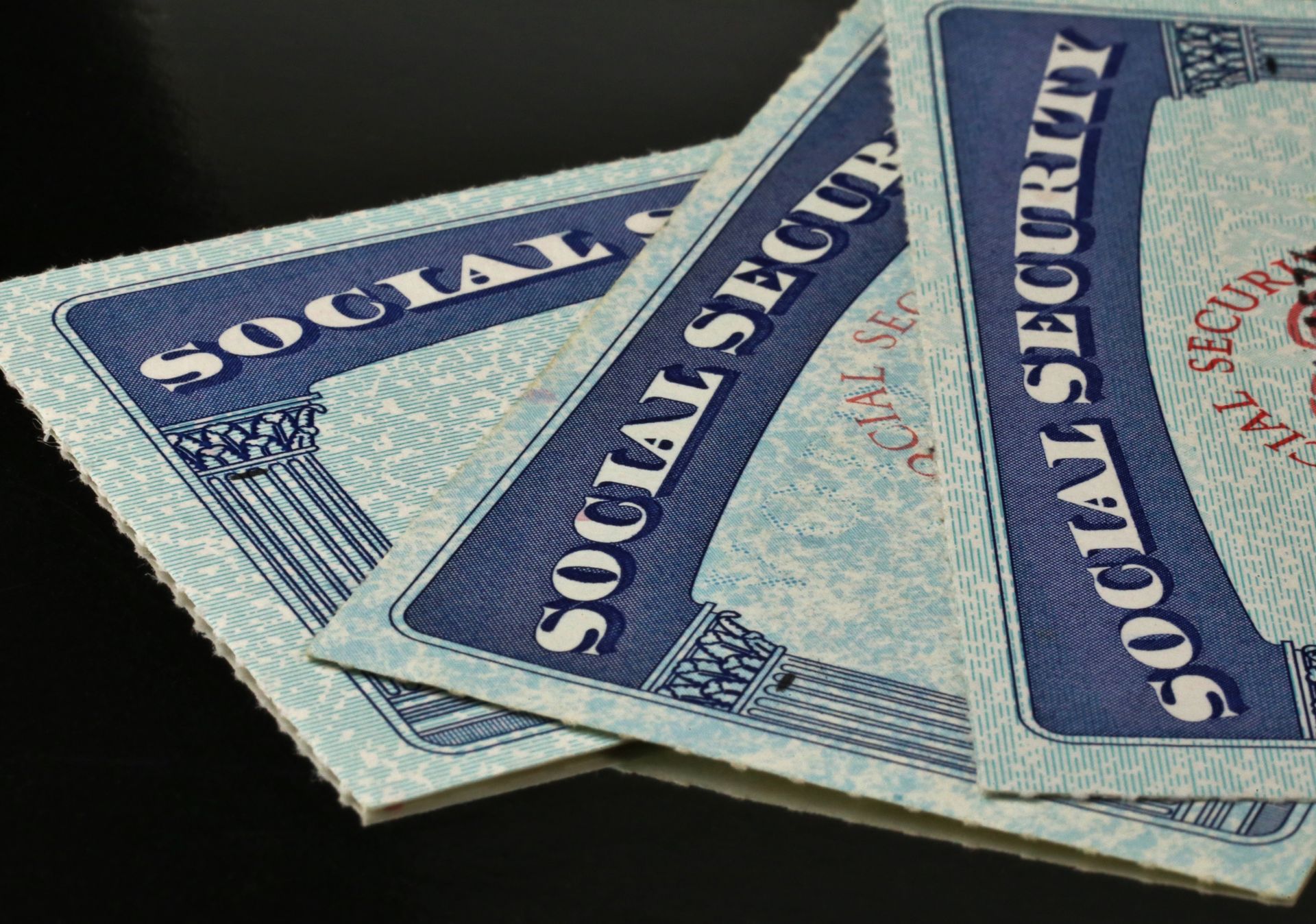3 Social Security Changes In 2024 To Know
These Social Security changes in 2024 impact how much you get paid and how you qualify.


New year, new financial resolutions, new Social Security information. On January 1, several 2024 Social Security changes went into effect, which impact what beneficiaries receive and how they qualify.
If you are a beneficiary or are planning to apply this year, there are several key changes to know. Some of these could be happy surprises, like bigger checks, but others could be concerning if they're surprises, like full retirement age stipulations.
Kiplinger covers Social Security all year to keep you up to date, and I'm taking this moment to walk through the most important points to know for the new year.

Sign up for Kiplinger’s Free E-Newsletters
Profit and prosper with the best of expert advice on investing, taxes, retirement, personal finance and more - straight to your e-mail.
Profit and prosper with the best of expert advice - straight to your e-mail.
1. Social Security checks are bigger in 2024
Every year, the Social Security Administration (SSA) institutes a cost-of-living adjustment (COLA) so beneficiaries can keep up with costs. It takes into account the percent change between average prices in the third quarter of the current year with the third quarter of the previous year.
The COLA for 2024 is 3.2%, meaning recipients are seeing their monthly payments rising by that amount for the new year. On average, that is a more than $50 monthly increase, per the SSA.
But when will you start getting the Social Security increase? The COLA went into effect January 1. The 2024 COLA for Supplemental Security Income (SSI) recipients began December 29, 2023, as January 1 is a holiday, the SSA said.
In terms of when exactly you receive your payment, it continues to come down to the date of your birth, following Social Security's regular payment schedule. Generally, if the date of your birth is the first through 10th day of its respective month, you'll get paid on the second Wednesday of the month. If your birthday is the 11th through 20th day of the month, you'll get paid on the third Wednesday. If your birthday is after the 20th day of the month, you'll get paid on the fourth Wednesday.
2. But Social Security taxes are rising in 2024, too
However, some wealthy taxpayers may see higher taxes, as the Social Security tax wage base in 2024 is rising by 5.2%.
The wage base for 2024 is $168,600, rising from $160,200. That means you won't have to pay Social Security payroll tax on what you earn over $168,600. The Kiplinger tax team explained: the maximum Social Security tax jumped from $9,932 to $10,453. So, people making over $168,600 in 2024 are paying about $521 more in Social Security taxes than they would have paid if the wage base remained at $160,200.
Keep in mind that the taxes fund the Social Security program, which provides retirement, disability and survivor benefits to eligible recipients.
3. Some 2024 Social Security qualifiers
There are two checkpoints to keep in mind for 2024: the earnings test and full retirement age.
Let's start with full retirement age. If 2024 is when you were planning to apply for Social Security, be aware of the full retirement age (FRA) rules. Yes, you can start receiving benefits as early as age 62, but you become eligible for full benefits when you reach the FRA, which is determined by your birth year.
If you were born in 1957, you reach FRA at 66 years and 6 months. But if you were born in 1958, you reach FRA at 66 years and 8 months, so you have to wait two more months than if you were born in 1957.
Now, let's get into the Social Security earnings test. This applies if you are below the FRA and still working and earning income while collecting Social Security (it's also one of the reasons most advice suggests waiting till FRA to collect).
Basically, if you are making above a set amount, the SSA will withhold $1 for every $2 above that amount. The earnings test limit in 2024 is $22,320, up from $21,240 in 2023.
Remember that it's just being withheld — when you reach FRA, your checks will account for the withholdings. Additionally, remember that it only accounts for income from work; investment income, for example, and retirement plan payouts don't count for the earnings test.
Related Content

Alexandra Svokos is the senior digital editor of Kiplinger. She holds an MBA from NYU Stern in finance and management and a BA in economics and creative writing from Columbia University. Alexandra has a decade of experience in journalism, specializing in online newsrooms. She previously served as the senior editor of digital for ABC News, where she directed daily news coverage across topics through major events of the early 2020s for the network's website. Before that, she pioneered politics and election coverage for Elite Daily and went on to serve as the senior news editor for that group.
Alexandra was recognized with an "Up & Comer" award at the 2018 Folio: Top Women in Media awards, and she was asked twice by the Nieman Journalism Lab to contribute to their annual journalism predictions feature. She has also been asked to speak on panels and give presentations on the future of media, including by the Center for Communication and Twipe.
-
 The Clock Is Ticking on Tax Cuts: Act Now to Avoid Missing Out
The Clock Is Ticking on Tax Cuts: Act Now to Avoid Missing OutEstate and gift tax exemptions are at an all-time high until the end of 2025. That may seem like a long way off, but setting things up could take longer than expected.
By Christopher F. Tate, J.D. Published
-
 Ready for a Career Checkup? Five Steps to Plan What’s Next
Ready for a Career Checkup? Five Steps to Plan What’s NextAsking yourself some pointed questions to figure out what you want and what you’re good at can bring more purpose and fulfillment to your professional life.
By Anne deBruin Sample, CEO Published
-
 How to Write a Check for a Wedding Gift
How to Write a Check for a Wedding GiftThere are some guidelines to writing a check for a wedding gift for newlyweds.
By Alexandra Svokos Published
-
 What To Know About Chrysler's Jeep Grand Cherokee Recall
What To Know About Chrysler's Jeep Grand Cherokee RecallThe Jeep Grand Cherokee recall concerns an issue that could cause a loss of vehicle control, NHTSA says.
By Joey Solitro Published
-
 Verizon's Latest Bundle Offers Netflix and AMC Plus for $25.99
Verizon's Latest Bundle Offers Netflix and AMC Plus for $25.99The new bundle will save you around $6 a month but you need to act fast, Verizon says.
By Jamie Feldman Published
-
 Healthcare Costs Top Concerns For Many Voters This Election Year, Study Shows
Healthcare Costs Top Concerns For Many Voters This Election Year, Study ShowsThe top financial worries for most Americans are unexpected medical expenses and healthcare costs, according to a new KFF study.
By Jamie Feldman Published
-
 What to Know About Toyota’s Recall of 381,000 Tacoma Trucks
What to Know About Toyota’s Recall of 381,000 Tacoma TrucksToyota issues recall, its fourth in a week, due to concerns with the rear axle assembly on certain trucks.
By Joey Solitro Published
-
 Delta Adds Second Solar Eclipse Flight On April 8
Delta Adds Second Solar Eclipse Flight On April 8Delta follows Southwest with special flights that offer the chance to view the eclipse as the path of totality runs across 13 U.S. states.
By Jamie Feldman Published
-
 What Checked Bag Fees Cost at Major Airlines After Recent Hikes
What Checked Bag Fees Cost at Major Airlines After Recent HikesThere's a growing list of airlines that have hiked baggage fees this year. Here's the latest on what you'll pay to check bags when you fly.
By Joey Solitro Published
-
 Healthcare System Still Reeling From UnitedHealth Cyberattack, AHA Says
Healthcare System Still Reeling From UnitedHealth Cyberattack, AHA SaysThe American Hospital Association says UnitedHealth's breach prevents many members from processing claims and checking patient eligibility for insurance coverage.
By Esther D’Amico Last updated









